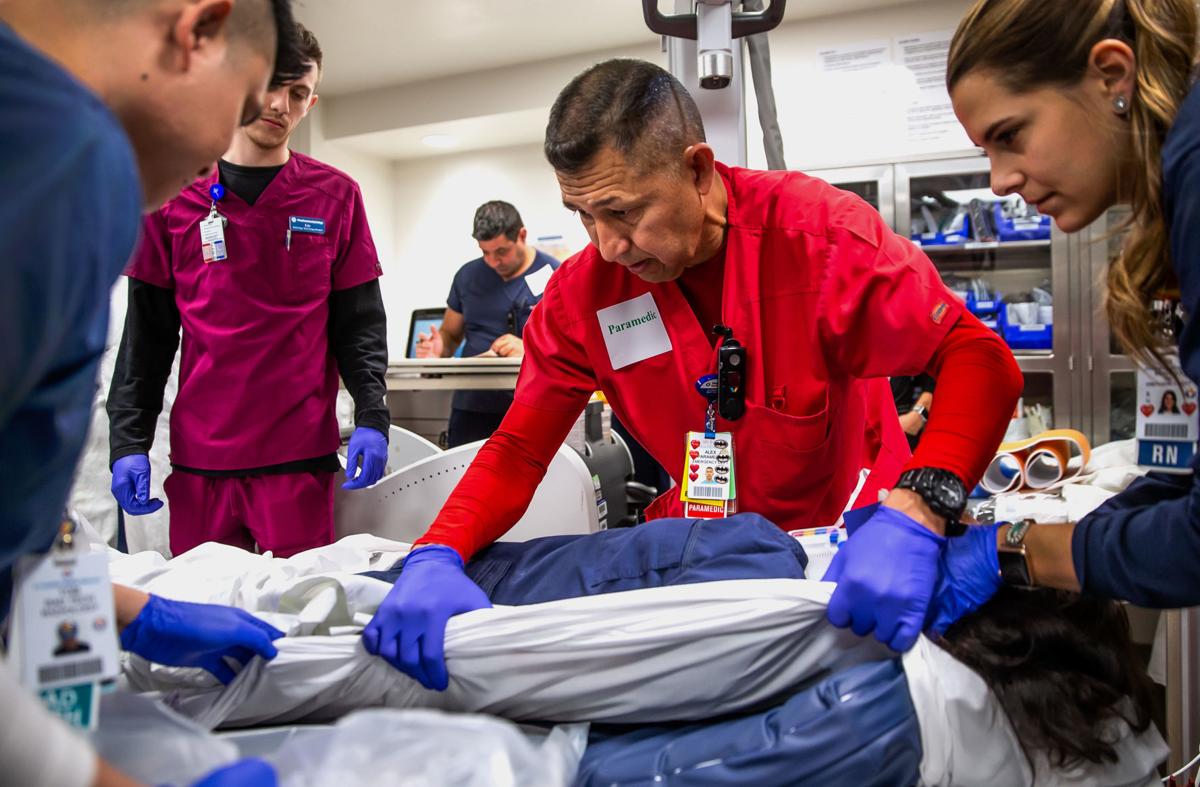For 16 years, Tucson has had just one hospital with staff capable of helping people with injuries serious enough to put them at risk of death or a significant disability.
Banner-University Medical Center, Southern Arizona’s only Level 1 trauma center since 2003, typically handles about 5,000 trauma cases per year with a staff of 10 trauma surgeons as well as medical residents and clinical trauma fellows.
On Friday at noon, Carondelet St. Joseph’s Hospital began moving toward becoming a second Level 1 trauma center here after officially opening its new trauma bays — which are specially equipped rooms — as well as a trauma intensive care unit.
The hospital, at 350 N. Wilmot Road, is not yet designated a trauma center but the goal is to earn a state Level 1 designation in the future.
Over the next year, the surgeons and staff will provide trauma services while data specialists collect performance-improvement information on the patients, from the time of arrival until hospital discharge.
“We’re not calling ourselves a trauma center because we are just opening,” said Paige Gesing, the trauma director for Carondelet St. Joseph’s. “Earning official trauma center designation takes time.”
The shortage of expertise in this area locally has been a strain on emergency responders, who lamented the 2003 closure of Tucson Medical Center’s level one trauma center.
Doctors, nurses and other community leaders at that time said the Southern Arizona population is too big for just one top-level trauma center.
Phoenix, in comparison, has 11 Level 1 trauma centers.
“There are not many other cities that need it as much as this one,” said Dr. Alicia Mangram, who has worked with St. Joseph’s Hospital and is the senior trauma medical director for Valley Surgical Clinics and Acute Care Surgical Specialists of Arizona.
Rebecca Ruiz-McGill, a Southern Arizona media manager for Banner-University Medical Center in Tucson, wrote in an email that the medical center welcomes the additional resources and “will support the trauma services at St. Joe’s, as we do the other hospitals in the area, with our expertise.”
“We are going to support the people of Tucson and local and regional hospitals. ... We are part of this community and want to make sure our community is getting the best and safest care they deserve,” wrote Dr. Bellal Joseph, the chief of trauma for Banner-University and chief of the division of trauma critical care, burns and emergency surgery at the University of Arizona.
Sara Perotti, the executive director for the Southern Arizona Emergency Medical Services Council, declined to comment on St. Joseph’s new offerings and what they could potentially mean for emergency service providers here. She instead referred questions to the Arizona Department of Health Services.
St. Joseph’s Hospital has hired three trauma surgeons and one more will be joining the staff in January, said Kimberly Diaz, the interim chief nursing officer for Carondelet Health Network. Diaz led a tour of the new rooms and ICU Friday.
In addition to the two new trauma bays, Diaz said, the hospital also has the ability to provide trauma-level care in four additional bays.
Upstairs, and with quick access for surgeons and staff, is a newly designed eight-bed trauma and surgical intensive care unit.
St. Joseph’s will not be able to admit children under age 15 in need of high-level trauma care there, but it does have the capacity to stabilize them before transferring them to a pediatric trauma center.
Becoming trauma-capable means the hospital now has 24-hour coverage for numerous surgical specialties. These include complex orthopedic surgery, neurosurgery, vascular and cardiovascular surgery, general surgery, facial surgery, hand surgery and plastic surgery.
Adding trauma-capable services included a significant investment in two new trauma rooms, emergency department renovations and related equipment and instruments.
The hospital employees have been conducting trauma drills for months, said Gesing, while hospital representatives have been reaching out to emergency medical service providers and first responders to let them know they can now bring more seriously injured patients to St. Joseph’s.
“St. Joseph’s Hospital now has the resources of a trauma center, and the practice drills really gave everyone an opportunity to understand the importance of the advanced level of service we’ll be providing and what we want to accomplish here,” said Mangram.
“It has helped with preparation and readiness, understanding the processes and finding opportunities for improvement in how we operate and communicate with EMS providers.”





